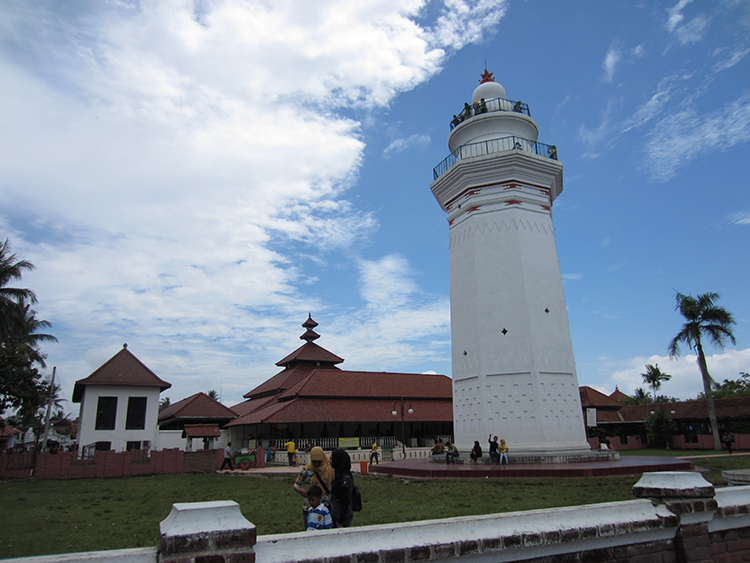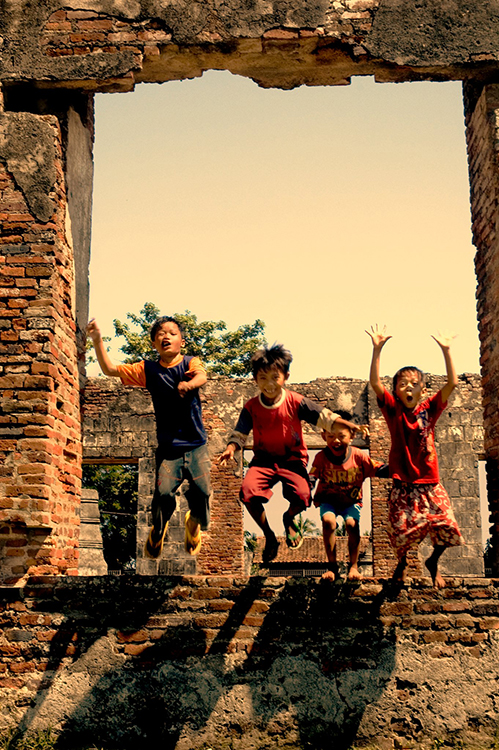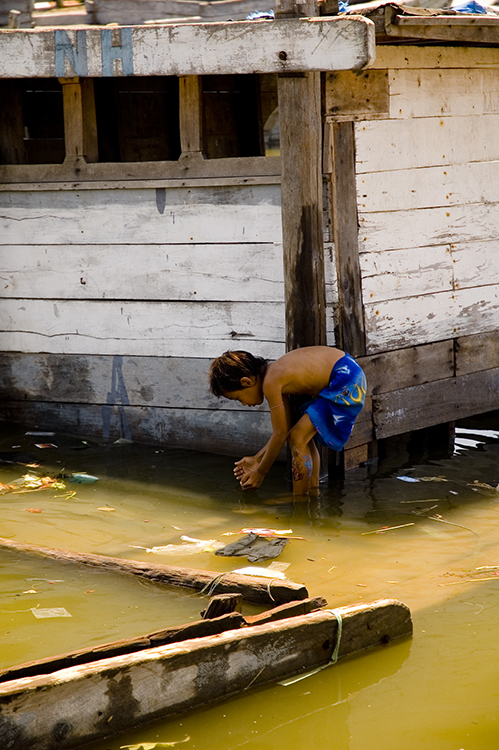An ongoing struggle to control a historic Mosque disrupts a heritage region
Herry Yogaswara and Tine Suartina
Anyone interested in the spread of Islamic civilization in Indonesia must visit Banten Lama (Old Banten). It is located within Banten city, the capital of Banten Province, on the north coast of Java. In the 16th century, Banten Lama was home to an Islamic sultanate that vanquished the region’s Hindu rulers. Banten Lama was an important Islamic centre until the nineteenth century. Islam spread from there to many parts of Indonesia. Today, divisions within the Islamic community over the management of an iconic mosque are the main cause of a number of heritage issues in Banten Lama.
A history of Banten Lama
The local population describes Banten Lama as the epicentre of local resistance in the battles and rebellions of the Dutch colonial era. In 1813, the Dutch abolished the sultanate and exiled the last sultan to Surabaya. Banten peasants fought for the sultanate’s return and resisted paying Dutch taxes. Parallels of this happened in 2000, when a wave of reforms and decentralisation led to the separation of Banten from West Java and the formation of Banten province.
Old Palace - Credit: Tanti Ruwani. Flickr CC
Visitors flock to Banten Lama’s diverse and rich 25 heritage sites. Thousands of Muslim pilgrims come to the mosques to pray and visit royal graves. Buddhists visit to pray in the Avalokitesvara temple. Tourists also come to see the remains of Surosowan palace, Speelwijk fortress, Tasikardi lake, Dutch graves and Karangantu Port.
However, there are concerns about the physical condition of the sites, arising from poor management and conflicting local interests. The Banten Great Mosque (Masjid Agung Banten) is the symbol and centre of Banten Lama. The area that surrounds it is now jammed full of kiosks, street traders and beggars. Consequently, many visitors limit their time there to praying at the mosque and visiting the graves of the royal families.
Conflict over the control of the Great Mosque
Many of the problems at the site are the result of ongoing conflicts between various descendants of the sultans and their families. Moreover, the provincial and district governments are reluctant to interfere in the management of the heritage sites, notwithstanding that following decentralisation reforms in 2002, they are responsible for managing cultural heritage.
Disputes between descendants of the sultans over the Great Mosque are particularly complicated. KH Fathul Adzim is the son of Akhmad Khatib, one of the first residents in Banten and a well-known ulama who fought against Dutch colonial rule in 1923. Indonesia’s first president, Sukarno, trusted Akhmad Khatib to manage Banten Lama. Tubagus Ismetullah Al Abbas, is the son of Tubagus Kuncung, an adopted brother of Akhmad Khatib, and was entrusted to manage the Great Mosque. The sons subsequently agreed to rotate leadership of the Great Mosque every five years. This has led to divisions within the local Islamic community.
Karang Antu harbor - Credit: Tanti Ruwani / Flickr CC
In part, this was the result of the evolving value of the Great Mosque. Five million pilgrims make financial donations every year. The mosque also receives grants from various government and non-government projects. Politically, the head of the Great Mosque holds an esteemed and strategic position, with access to resources, political power and social status.
Disruptions to heritage management
As the Great Mosque is the central point of the heritage area, any conflict there affects most of the sites within Banten Lama. There are disruptions every five years when the head of the Great Mosque changes and the new head often reverses the actions of his predecessor. This affects the physical condition of surrounding sites, such as the remains of Surosowan palace and fortress. It also disrupts the arrangement of entry gates to the mosque and the location of the petty traders and kiosks nearby. The movements of the large number of visitors and vehicles, and the physical infrastructure built to accommodate them, all affect the condition of the Great Mosque, and spill over into other sites.
The other cultural heritage sites in Banten Lama are the Buddhist temple, Avalokitesvara, Tasikardi Lake, Speelwijk Fortress and other smaller mosques. All have a different ‘owners’, and each ‘owner’ has a different approach to heritage management. The person who can assert their version of heritage management gains local prestige and access to conservation resources.
Overcoming barriers to heritage planning and investment
As for formal arrangements and development policies, local regulations for the management of Banten Lama are well out of date. The last local regulation, passed in 1990, cannot accommodate the contemporary tourist and economic pressures. The boundary between sites and houses has become unclear because there are no formal rules regarding zoning. Lack of public facilities leads people to use the heritage sites for public activities such as sports and grazing livestock. Tourist facilities have been developed without proper regard for the sites. The old and inappropriate local regulations are therefore an underlying cause of problems and conflicts.
However, there has been some recent positive progress through dialogue between local people. Given the management history and difficulties at Banten, this is a good starting point. Local support is crucial for the site. The problems of Banten Lama will be most appropriately addressed by the locals, who have the most invested in and understanding of the sites. Still, they cannot do it alone. Banten’s provincial government must be more active and involved in the management of Banten Lama. They have the authority to coordinate heritage management in order to secure the best possible outcomes for local residents and visitors. Heritage will only be meaningful and beneficial if it involves the local population.
Herry Yogaswara (yogaswaralipi@yahoo.com) is a researcher in the Research Center for Population in the Indonesian Institute of Sciences (LIPI). He is trained as an anthropologist and his research focusses on natural resource management, conflict and ethnicity. In 2012–2014, he undertook research on the political-economy of cultural heritage in Banten Lama, Banten Province.
Tine Suartina (nengtine1@gmail.com) is a researcher in the Research Center for Society and Culture, Indonesian Institute of Sciences (LIPI). Her research focusses on issues of law and society, including legal pluralism and adat (customary) law. During 2012–2014, she participated in a multidisciplinary research project on the “Political-economy of Cultural Heritage Management in Indonesia”. Tine conducted her research on Banten Lama.


